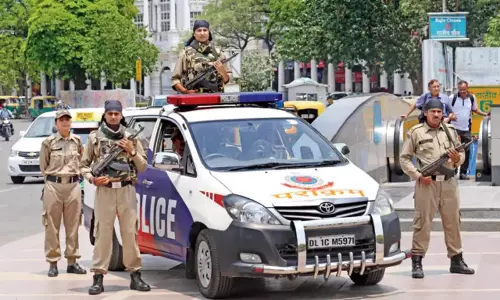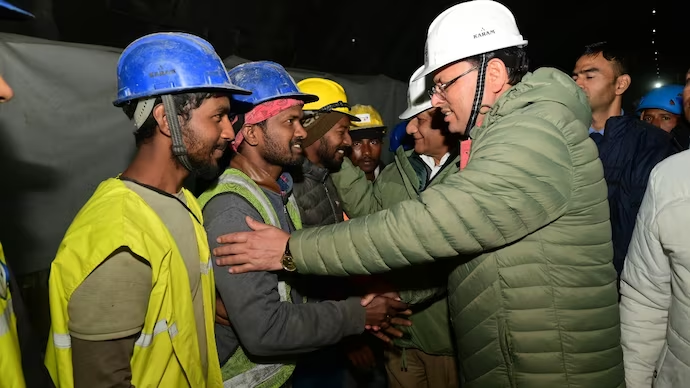
Silkyara Tunnel rescue: Lessons still remaining to learn
text_fieldsFinally, the good news has arrived: After 17 days of waiting, the 41 workers trapped in Silkyara Tunnel in Uttarkashi are safely back to freedom. The rescue operation started within hours after tunnel collapse on November 12 has succeeded sailing through misgivings and uncertainties. It is no small task to bring the workers, who had spent good many days in the dark chamber, back to life without any serious injuries. The National Disaster Response Force (NDRF) has successfully pulled off the biggest challenge in history. As the prayers of the nation have come to fruition, let’s congratulate those who helped out the rescue operations.
Perhaps, this is the first time such a long drawn rescue operation has taken place in the nation. The Operation Zindagi reminded in many ways of Thailand’s Tham Luang cave rescue of 12 football-paying children and their associates. The comparison holds water not so much about similarities as dissimilarities between them. In Thailand, all people were saved in nine days with the help of international divers and others. Here it has taken 17 days. This could happen from reasons including differences in climate and geographical features. But is that the only reason for this delay? Seeing it objectively will reveal that there is more to it. We have to admit there were several lapses in rescue operations and shortfalls in our disaster management systems which affected the operations. It is also true that we are a tad behind in technology. If that was not the case, 41 workers would have come out at least on the 11th day of entrapment. It is about time we thought over why our systems are slow to act.
According to figures released by various agencies, more than a thousand landslides were reported over this year alone from the tunnel disaster site in Uttarakhand. As many as fifty deaths occurred there. Or rather, huge constructions are uncontrollably taking place on the cape of Silkyara-like disasters. In another sense, this was an anticipated disaster. Unlike other mountain ranges, the Himalayan regions are extremely fragile. Experts have repeatedly warned that effective restraints against constructions here are needed. Ignoring all these, the 4-km tunnel construction on the Brahmakhal-Yamunotri National Highway was started as part of the Centre’s Char Dham National Highway. The project aims at constructing a 1,000 km road connecting Hindu pilgrimage towns in Uttarakhand including Yamunotri, Gangotri, Kedarnath and Badrinath. The road project is another of the Modi administration’s agenda it wants to urgently complete like Ram Temple ahead of Lok Sabha elections. Its construction has taken place throwing to the winds all the rules. While constructing a road in the country, a separate environment clearance is required for every 100 km. None of that applied to this project. The tunnel at Silkyara itself has been an addition to the project. It is said that the tunnel can save up to 20 km. Many environmental outfits and researchers working in the Himalayas have come out against it. Many alternative routes were also suggested. Rejecting them all, authorities went ahead with its plans.
We are now living through experiences that remind climate change is not a fiction or a phenomenon happening elsewhere. The lesson from Silkyara should be learnt in the context of these realities. The Himalayan Mountains have great role in influencing climate of Indian subcontinent generally and that of the northern India particularly. The entire sector is in danger from various reasons. One of them is the unnecessary encroachment of man on nature. The mindless construction activities in the area has toppled over the weather patterns here. Frequent incidents of landslide, flash floods and heat wave in central India stem from these factors. The tunnel tragedy should be seen a continuation of this tragedy. It cannot be reduced to a mere accident. The accident calls for new disaster management and environmental rules. Let it become a great lesson!


























